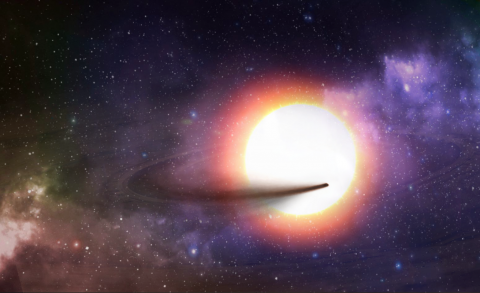You are here
- Home
- SPS astronomers find signs of a disintegrating planet around a nearby star
css pmedia
SPS astronomers find signs of a disintegrating planet around a nearby star

Using data from NASA’s Transiting Exoplanet Survey Satellite space telescope, a team of OU astronomers within the School of Physical Sciences, led by Dr Mark Jones, have possibly discovered a planet in its final death throes. They studied a nearby star, called DMPP-1, which is about 200 light-years away and was already known to harbour a system of planets. Dr Jones expected to find signs of these known exoplanets, but that wasn’t what was seen.
Instead, the team found a faint signal of yet another planet, orbiting the star every 3.3 days. This new planet orbits very close to its star, and is consequently strongly heated, perhaps to temperatures exceeding 1,800 degrees celsius. At temperatures this high, rock vaporises! If the planet is around a tenth of the mass of Earth or less, this leads to a rapid erosion of the surface and ultimately the whole planet, with the vaporised material escaping the planet’s gravity.
There are a handful of these so-called “catastrophically disintegrating exoplanets” (CDEs) already known, discovered when dust clouds forming from the vaporised surface of the planet pass in front of the star. These known examples are much more distant than DMPP-1, and consequently, appear much fainter. This makes it difficult for astronomers to collect enough light to study the dust in detail. DMPP-1 is 1,100 times brighter than the brightest known example, which means potentially this discovery could revolutionise astronomers’ ability to study the dust and understand what the disintegrating planet is made of. The signal from the new planet is weak, and Dr Jones and the team want to confirm it with further observations.
If the new planet’s existence is confirmed, it opens up exciting new possibilities for measuring the composition of rocky planets around other stars.
The results are published in a paper by Mark Jones, Carole Haswell, John Barnes, Dan Staab and René Heller in Astrophysical Journal Letters.
Image Credit: Maciej Szyszko
.jpg)
